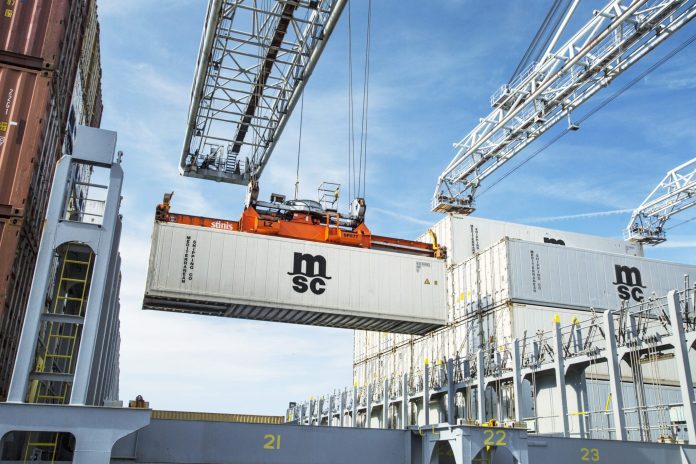Orange has announced new partners and revealed the results of new use cases to test private industrial-grade 5G at the Port of Antwerp in Belgium, the second largest port in Europe. It has also said the port testbed will inform its wider industrial 5G strategy, as its enterprise division, Orange Business Service (OBS), looks to offer private 5G on a “global scale”.
Valerie Cussac, executive vice president for smart mobility at OBS, commented: “As a network-native digital services company, OBS is poised to offer 5G private networks on a global scale, building on Orange’s European 5G networks and 5G campus in the Port of Antwerp, [and] extending outside the Orange footprint.
“This includes delivering end-to-end solutions for a range of prepackaged use cases, addressing the true value of Industry 4.0, and we look forward to supporting our customers digitalise their global operations to improve the efficiency of their industrial processes and cost structures.”
German chemical manufacturer BASF has joined the fold at the Port of Antwerp; it lines up alongside a “first wave” of industrial companies at the site, including chemical company Borealis, and polymer manufacturer Covestro, as well as the port authority, itself. Logistics operator Katoen Natie is also in the wings, if it has not joined already.
The group are experimenting with real-life industrial applications that make use of the massive machine-type (mMTC) and incoming ultra-reliable low-latency (URLLC) strands of the new 5G standard. The 5G experimentation so far has focused on smarter port logistics, ship-to-shore data streaming, remote AR and field inspections, automated AI-led quality inspections, and critical communications.
The 5G test network at the Port of Antwerp is a private set-up, which will afford “tailor-made connectivity” and “guaranteed service quality” for their industrial use cases. The test hub, opened in late 2019, is being managed by Orange Belgium. It is billed as Belgium’s “first 5G stand-alone architecture network”. It involves a separate 5G radio and core network for the region in and around Antwerp, rather than relying on existing LTE infrastructure.
Rival operator Proximus has a deal with the Port of Antwerp, as well, signed in February, to develop a private 5G network in tandem. During a six-month pilot phase, several concrete applications will be tested, Proximus said. The use cases sound similar, including connected tugboats, wireless camera surveillance, and drone-based safety inspections.
The local port authority said it had connected a tugboat in the harbour over Orange’s 5G setup to stream images, and radar and sonar data to the control room to improve towing efficiency and to increase the number of ships entering and leaving the premises each day. It is also looking at a number of “concrete 5G applications”, such as smart cameras, drones, and autonomous ships and trucks.
Covestro, meanwhile, is running remote field inspections of its chemical plants over 5G. It has equipped operators variously with tablets and smart glasses to receive large amounts of technical data and videos, including 3D models of installations. The initiative has reduced the number of workers within the production environment.
Borealis has connected plant equipment with a cloud-hosted quality-check system, which runs machine learning in the backend to train algorithms in edge sensors to detect anomalies. “The connectivity is now released from cable infrastructure, while maintaining data isolation and the highest industrial standards for its production,” said Orange.
BASF is working with Orange Belgium to give staff ruggedised 5G smartphones, offering mission-critical ‘push-to-X’ communications, as well as other work apps. BASF also wants to implement location-based safety applications and real-time image sensing.
Top-line commentaries were issued with the press announcement, from the various parties involved in the project.
Werner De Laet, chief enterprise and innovation officer at Orange Belgium, said: “The co-innovation process has proven to be a great way of discovering together the industrial potential and the benefits of the 5G technology. This supports the necessity of the 5G roll-out for the industry in Belgium. We hope that the various regulations will evolve to exploit fully the 5G technology potential in order to meet the economic and societal stakes, taking into account the environmental benefits of 5G in terms of energy consumption.”
Erwin Verstraelen, chief digital and innovation officer at the Antwerp Port Authority, commented: “It is important to learn now about this technology as a company and gradually prepare for the arrival of it, because the great potential lies in B2B applications. It’s also important to realise that 5G is part of our country’s digital infrastructure and that we cannot afford to miss the boat there.”
Peter Verdonck, venture manager of the Covestro aniline expansion project, said: “We were amazed by the strength of the 5G-coverage in our outdoor production installations, even in between the steel structures. It is clear 5G will offer us the opportunity to enter a new, paperless era… We will be able to make sure that field operators in the future always have the latest technical information instantly available on the spot.”
Steven Werbrouck, in charge of site automation services and connectivity at BASF in Antwerp, said: “It would be great to evolve to a one-device situation… If we could add useful features for the intervention teams, whether from the medical department or fire brigade, we can help them to be more effective. Think about geofencing, video streaming with body cams or connecting wearable gas detectors to the dispatcher’s overview. What we have seen so far looks promising. If coverage and quality of service can be guaranteed, then this could well be the wireless network of the future.”

